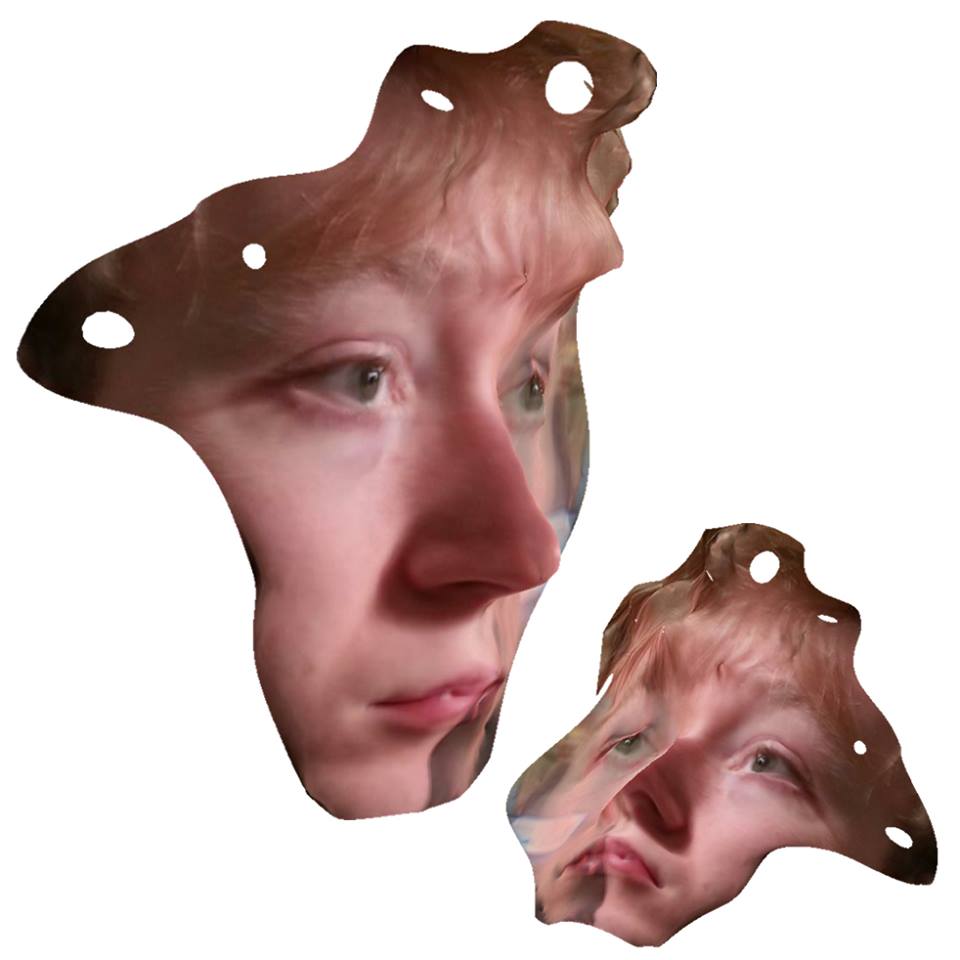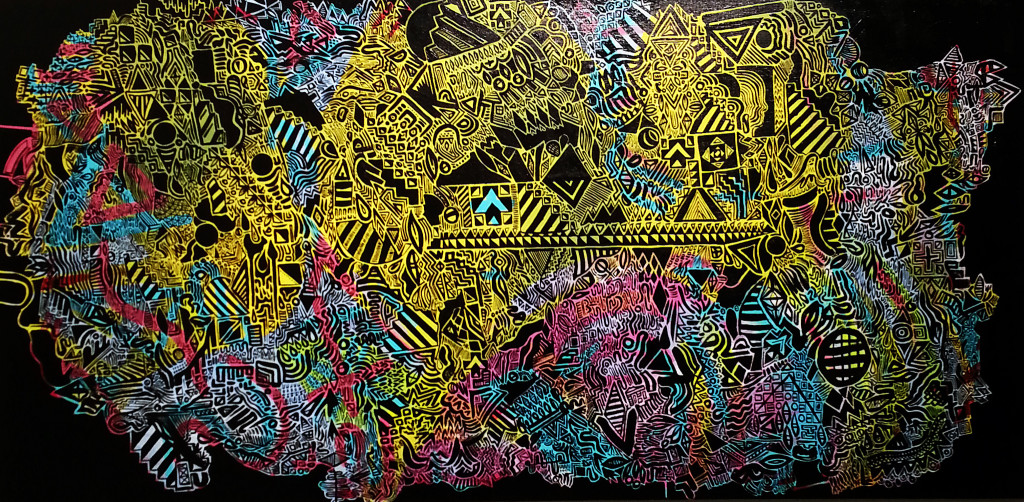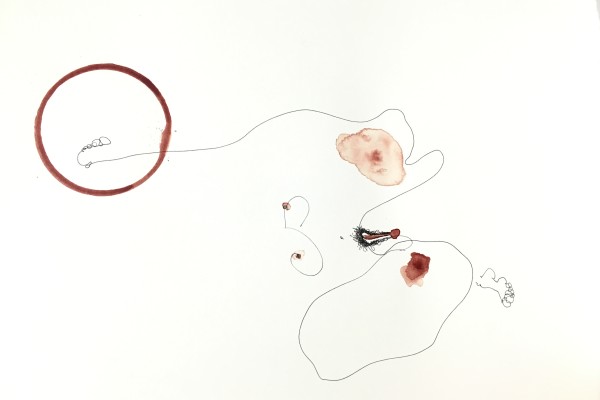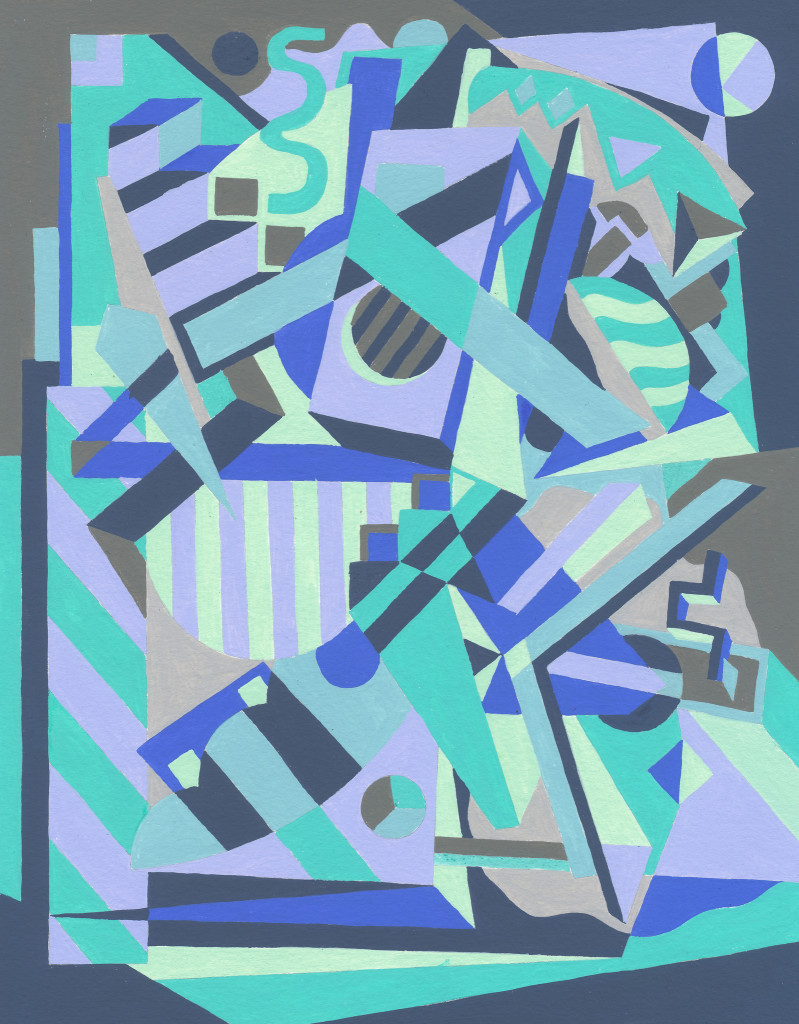 From drawing and painting to lighting homemade explosives in the backyard, Allen Taylor has always been encouraged by his family to do what it takes to get the results he wants. He’s been through the ups and downs of any working artist—from rewarding creative collaborations to hours of creative time spent watching Netflix instead. But today, he’s come out on the other side of it all and has exciting things in store. This year, Taylor plans to focus on an imaginative body of work that will bridge his talents of music and visual art.
From drawing and painting to lighting homemade explosives in the backyard, Allen Taylor has always been encouraged by his family to do what it takes to get the results he wants. He’s been through the ups and downs of any working artist—from rewarding creative collaborations to hours of creative time spent watching Netflix instead. But today, he’s come out on the other side of it all and has exciting things in store. This year, Taylor plans to focus on an imaginative body of work that will bridge his talents of music and visual art.
While he prefers a solitary environment to sketch and create, the Atlanta native says his community and relationships are the most important aspects of his life. Here, Taylor talks to CommonCreativ about what he believes to be the pros and cons of being an Atlanta artist, his eagerness for more artistic opportunities in our community and more.
CommonCreativ: You express yourself artistically in a lot of ways, including painting, drawing, music and video. Which came first?
Allen Taylor: I never had a moment where I caught a huge wave of inspiration, like “Now my dream is to PAINT!” It was never like that. It’s always been this fluid thing for as far back as I can remember. To me it’s always been about ideas. Like, “Oh I have this idea for a painting, I’d better learn how to paint,” or “I want to make a song that sounds like this, so I better learn how to play.” My obsession with culture and art came first, then the logistics of learning the skills to fulfill the ideas came later. I guess technically, drawing came first. I doodled a lot as a bored kid in school.
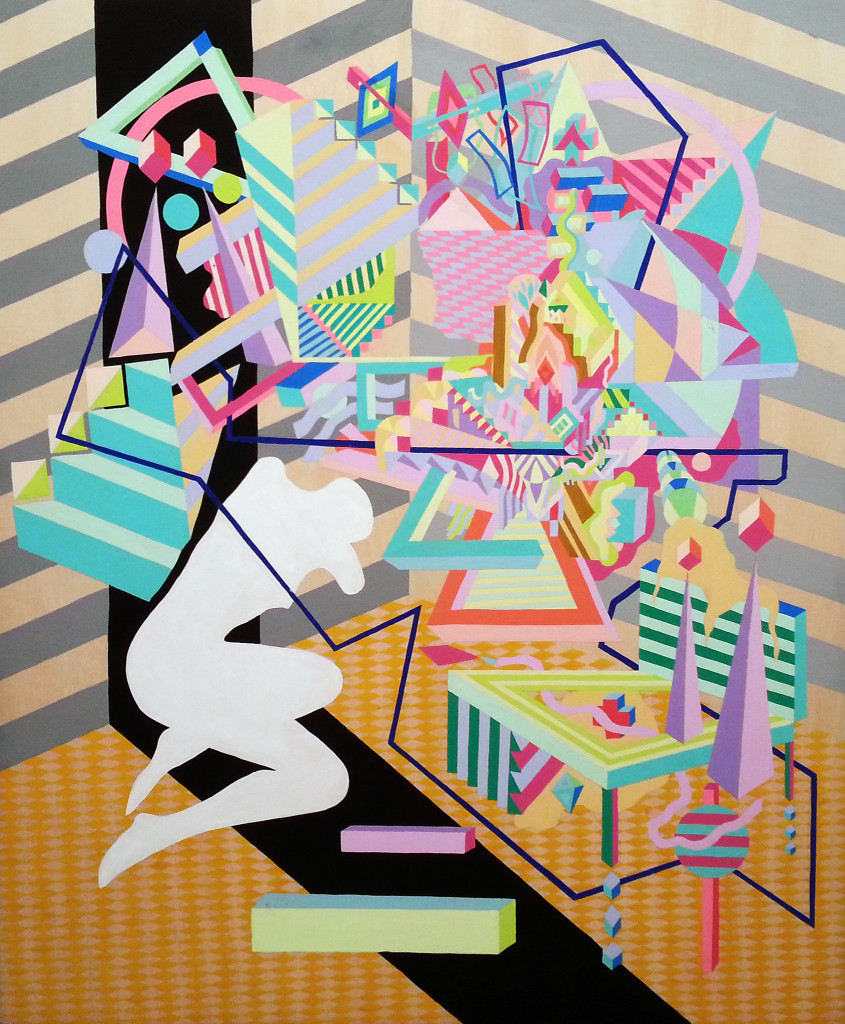 CC: Was art an important part of your household growing up?
CC: Was art an important part of your household growing up?
AT: My household wasn’t particularly artistic, but it was an exceptionally creative household in the sense that we were always making things. I’m lucky enough to have the kind of parents who support me in everything that I do, whether they get it or not. My dad is a scientist, and my mom is a fantastic interior designer. My dad would bring home computers like, “Here, 4-year-old son, learn DOS. Then later let’s go blow up stuff in the backyard.” And my mom put up this really intense patterned wallpaper in my room that I would trace and bounce around with my eyes before I went to sleep, which probably did some mental damage now that I think about it (ha ha). Growing up in an environment that encouraged full exploration of ideas and creation was so valuable. I hope to raise my future little Allens in that same kind of open-minded way. But I’m the only traditionally “artistic” person in my immediate family. It was pretty much my own doing.
CC: Is there a particular visual artist who has inspired you the most?
AT: Probably the two most important artists for me are Stanley Kubrick and Brian Eno. But I’d say [what inspired me the most was] growing up surrounded by things like video games, cartoons and comic books—that had the greatest impact on me. If you take all of that stuff out of context, it’s intensely overstimulating and psychedelic—especially the old 2D Nintendo games, with the extreme vibrant colors. I was also a nature kid who played in the woods a lot, making forts and bases and stuff, so I’ve always been attached to the idea of having a private, personal world to myself that I created. That kind of imaginative, vibrant environment definitely sent me down the path of development to where I am now.
The first time that I remember having my mind blown by a piece of art was when I was in fourth grade or something, and my family had gotten a new computer that had a digital version of Encyclopedia Britannica. I was bored and just messing around, and that was when I first saw Salvador Dali’s The Persistence of Memory and The Dream. I remember it very clearly. The surrealists struck a chord with me at very early age. Having my own computer with the Internet in my room was the biggest gift I can imagine, looking back on it. [It elicited] unhindered exploration and thought. That was a pretty big deal back in 2002!
In relation to what got me on the path of what I make now, the biggest influence on me was when I found out about the Fort Thunder and noise music that was going on in the early/mid 2000s when I was in high school. Seeing Paper Rad and Ben Jones, Brian Chippendale and CF’s comics, and getting Black Dice’s Creature Comforts when I was 16 blew my mind to pieces. I was like “Wait, why do these weirdoes get to do this? No fair, I’m a weirdo, I want to do this!” I owe a lot to that scene. I fell in love with it. All of those record covers—too good.
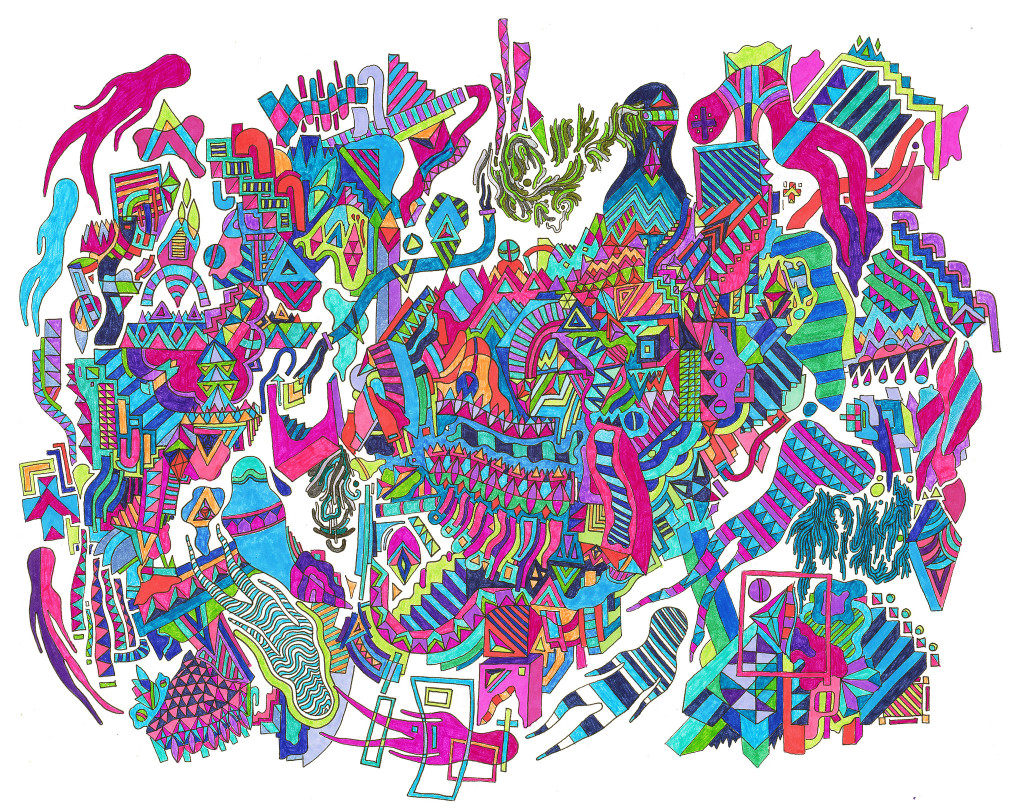 CC: How did you start getting into video art?
CC: How did you start getting into video art?
AT: I tend to stumble into things. I owe a lot to being in the music scene in Atlanta and working with Double Phantom Records. Bands need art, and lots of it. Basically through doing art and graphic design for bands, I got asked if I knew how to make music videos, and totally lied and said I knew how to. I thought, How hard can it be? Pretty dang hard, actually!
CC: Is there an exhibition or piece you’re most proud of?
AT: There isn’t one particular thing that’s my shining moment. For me, the things I’m most proud of come in chunks over a certain period of time, focused around particular relationships with other artists. Like in the spring of 2011, I had a show at Beep Beep Gallery with Andrea Sanders back-to-back with a show at MINT Gallery with Josh Feigert. That was a special time getting to work closely with both of them. The same goes for all of the bands that I’ve been in over the years. The relationships are the most valuable thing. Also the show I curated called Kangaroo at Borderline gallery with Joy Phrasavath is something I’m really proud of.
CC: What kind of environment do you prefer to be in when working?
AT: I have two general modes of making visual art, either by holing up in my studio and being wild and messy, or traveling around minimally with a backpack and sketchbook. I’m not very fond of mixing the two, or using a shared studio space. I find there is a clear effect [achieved] in my work based on what the surrounding environment is like. Two different kinds of controlled chaos, I suppose.
I love living in a sketchbook, which is the phase that I’m currently in. Making art that starts with the assumption that it’s private and won’t be shared is pretty exhilarating. It brings me back to the place where I started drawing in high school as an awkward, shy kid. It’s my special secret, my world. This is where I can find the newest ideas that I can translate over into a studio with the intent to eventually display it to an audience. It’s the fun part of making art.
CC: So the environment is crucial to the process.
AT: Having a complete set up that is comfortable and immediate is very important to my process. Having that setup lets you explore and flow with ideas, to fully chase the idea without hindrance. When an idea hits, like when you’re in the shower or cooking a hot dog, you can immediately go and work to your fullest ability. That’s the ideal, at least.
It can be easy to fall into a period of inactivity and not being productive. There’s no one harder on himself or herself than the artist. Many creative types I know deal with mental disorders and depression, and it’s often hard to recognize and even harder to get out of. Having struggled with this constantly over the years, it’s easy to give in and watch Netflix until you gain 15 pounds. The creative spirit is a muscle just like anything else, and it must be conditioned and trained. Ability and craft can definitely atrophy, and it is ugly when it happens. While you can’t force or create inspiration on command, you can train yourself and your craft to be its best when that kind of insight comes around. I suppose that virtue can be applied to any part of life really. #noexcuses
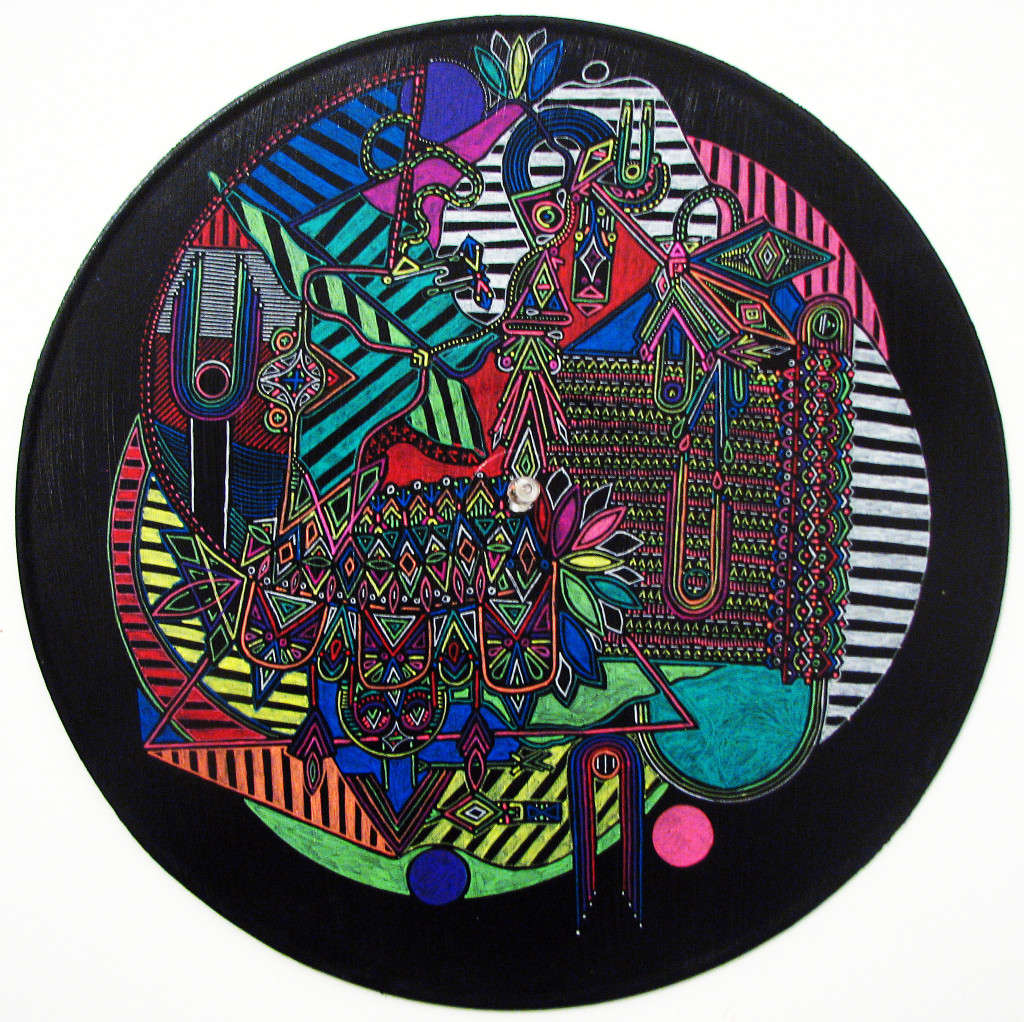 CC: What are you working on now?
CC: What are you working on now?
AT: For the most part, I’m taking the year off from showing a larger body of work in galleries. It’s easy to fall into the cycle of simply making pieces specifically for a certain show. [It leads to having an] aesthetic float along without developing over the long term. I try to treat shows like releasing a new album: everything at once rather than scattered and staggered. I have the gift of being able to take my time, so I’m going to milk it, for sure. I also hope to finish my book this year, which is a combination album and large format art book. It’s kind of a guided experience, like a film. I think it’s going to be something special. I’ve also been getting back into making comics and narratives, and I hope they get to a condition where they are presentable.
I’ve been in a heavy music-making mode lately, mainly working solo as Feast of Violet and newly releasing my more experimental material as Allen C Taylor, as sort of a bridge from my visual art to sound art. I’ve been doing live ambient performances, working with folks like the The Creatives Project, DeerBearWolf and General Assembly. I hope to transition that into conceptual pieces and installations. I’m finishing up an album for DKA Records, and working on an album for Classic Cult Grotesque, which is a newer Atlanta label. Both releases should be out by the end of the year, and I’m really excited to share them.
CC: What’s the most memorable thing someone has said about your work?
AT: The one description that always stuck with me was that someone said my work was like, “if David Lynch directed Yellow Submarine.” I think that’s a good direction for anyone to go in. I’m satisfied with that.
 CC: What are the best and worst aspects of being an Atlanta artist right now?
CC: What are the best and worst aspects of being an Atlanta artist right now?
AT: One the best parts is the advantage of time and affordability. It’s truly a gift to be able to live a creative lifestyle without having to work a billion hours a week just to pay rent. It’s relatively easy to survive with little money if you do it right, and you have all the time in the world to create. I probably wouldn’t be working in several mediums if I lived in a more expensive city. But with so much time, it’s also very easy to fall into a pattern of laziness.
The community is also amazing. There are only so many venues and galleries to show in, and sometimes there’s more supply than demand, so everyone supports each other and goes to each other’s shows. That leads to a lot of interesting results when different cliques and micro scenes have to interact with each other on a regular basis. It’s like a poster photo, with metal people and techno people having fun at a party together. Eclectic diversity out of necessity, and the pride that goes along with that, is why I like Atlanta. Events like Artlantis (R.I.P.) and the Monster Drawing Rally at the High Museum were such amazing experiences that put artists at every level and genre in the same equalizing space.
CC: Why do you think so many artists move to bigger cities?
AT: Of course the cost of cheap living comes at the expense of opportunities and outlets that larger, more expensive cities could provide. I think that’s why so many talented people who originated in Atlanta and the South branch out to other cities. There are so few large scale, worldwide outlets, that it’s easy to hit the ceiling of one’s career quickly. I know a lot of working artists and bands have had to concede to this system, and it’s really unfortunate. That’s why so many people leave Atlanta for New York or San Francisco. I’m like “Don’t move! We need you here!” It’s easy to become cynical in Atlanta. I’d like to have all of the same opportunities here as in other cities, but that’s just not the way it is. Atlanta is deeply lacking in outlets, options, and opportunities, and the only way to change that is for people to truly acknowledge that and build more from the ground up, instead of peacing out for more established communities. It’s getting better, but there’s a lot of work to be done.
CC: Art related or not, what are you most looking forward to over the next year?
AT: A lot! I am so excited for Murmur, the organization behind the Atlanta Zine Fest. They met their Kickstarter goal and I am so excited to see what kind of good they will do for the emerging arts community in Atlanta. This year’s Atlanta Zine Fest should be amazing as always.
You can see more of Allen Taylor’s work on his site.

